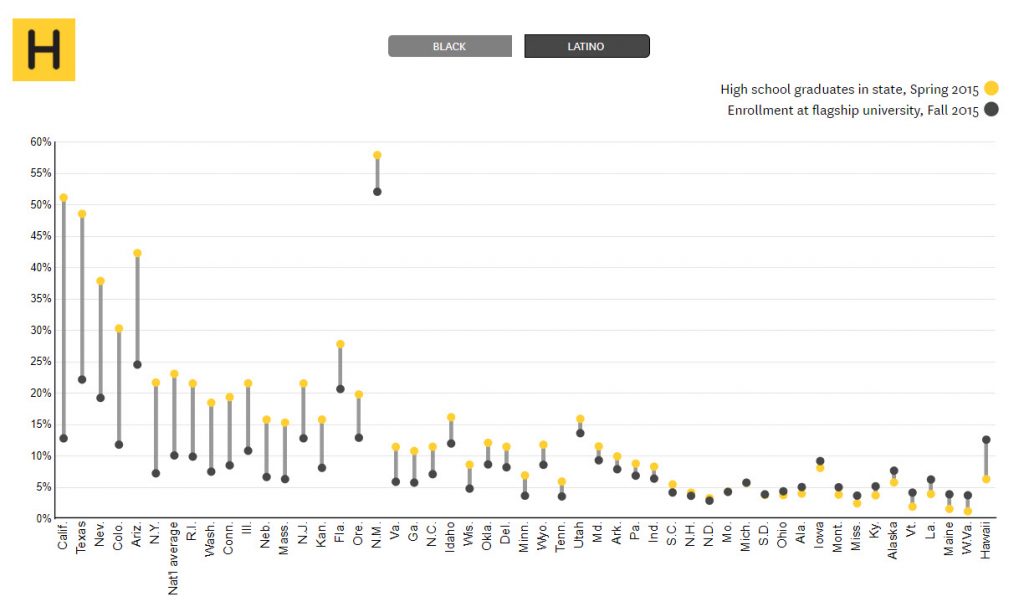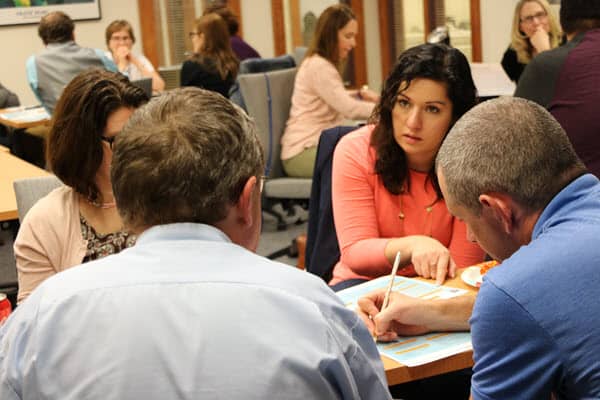By Doug Ward
Here’s one more reason to worry about rising tuition rates: decreased diversity.
In an examination of 14 years of tuition increases at public colleges and universities, Drew Allen of Princeton University and Gregory Wolniak of New York University found that for every $1,000 that tuition goes up, racial and ethnic diversity among students goes down by 4.5 percent.
To put that into perspective, they point to a College Board report showing that between 2008 and 2018, average tuition and fees at public four-year colleges and universities increased $2,690, or 37 percent. In some cases, tuition rose by $1,000 in only a year or two, they write in The Conversation.

Allen and Wolniak’s study examined 600 four-year and 1,000 two-year public institutions between 1998 and 2012. The correlation between increases in tuition and declines in diversity was most pronounced at colleges and universities they described as the “least-selective.”
Relatedly, they found that a 1 percent increase in tuition at four-year private colleges or universities led to a 3 percent increase in diversity at nearby public institutions. In other words, tuition increases make a difference at both public and private universities.
“The end result is the nation’s colleges and universities become less reflective of the ethnic diversity of the United States as a whole,” Allen and Wolniak write.
The highest rejection rates, state by state
In the status-obsessed universe of higher education, colleges and universities often measure their standing by the percentage of students they reject.
It’s a circular process. Institutions deemed to be the best receive the highest numbers of applications. Those with the highest number of applications reject larger numbers of students, solidifying their desirability by maintaining low acceptance rates.
I won’t get into the validity of that game here, but I did think a recent a recent state-by-state list of colleges and universities with the lowest acceptance rates was interesting. You can guess many of them: Harvard (5.4 percent acceptance rate), Yale (6.3 percent), Princeton (6.5 percent), University of Chicago (7.9 percent).
You’ll probably have a harder time determining which universities in states other than Massachusetts, Connecticut, New Jersey, and Illinois have the lowest acceptance rates. At least I did. The website 24/7 Wall Street listed those universities in an article called “The Hardest Colleges to Get Into in Every State.” Not surprisingly, most are private universities, although a fair number are public.
In Kansas, Sterling College has the lowest acceptance rate (37.4 percent). That compares with more than 90 percent at KU, K-State and Wichita State. Other regents universities have slightly lower admission rates.
For comparison, here are the universities in surrounding states with the lowest admission rates:
- Colorado: Air Force Academy (15.1 percent)
- Iowa: Grinnell College (20.2 percent)
- Missouri: Washington University (16.5 percent)
- Nebraska: Creighton University (70.7 percent)
- Oklahoma: University of Tulsa (37 percent)
These are the state universities that made the list:
- University of Alaska (73.5 percent)
- University of Arkansas (41.9 percent)
- Clemson (50.5 percent)
- Delaware State University (40.6 percent)
- Georgia Tech (25.8 percent)
- University of Idaho (75.9 percent)
- University of Michigan-Ann Arbor (28.6 percent)
- University of Washington-Seattle (45.3 percent)
- University of Wisconsin-Madison (52.6 percent)
- University of Wyoming (95.1 percent)
Interestingly, the increasing difficulty of getting into some public universities was recently identified as one of the top education trends to watch during the coming academic year. Scott Jaschik, editor of Inside Higher Ed, listed the growth of “public Ivies” among a trends list he offered to members of the Education Writers Association. In addition, he said, some universities have increased the number of students they put on waitlists, raising students’ hopes even as the likelihood of eventual admission declines.
Briefly …
A new study in the interdisciplinary journal PLOS One offers additional evidence for providing pedagogical training to graduate students. The study found that Ph.D. students who were trained in evidence-based teaching practices were just as good at research as those who focused on research alone. … MindShift offers four useful principles for approaching student-centered learning. The article is aimed at K-12 instructors, but it applies to college instructors, as well. … More colleges and universities now use Canvas than use Blackboard, e-Literate reports. In terms of market share, the two are tied at 28 percent, but Canvas has two more institutional users than Blackboard.
Doug Ward is the associate director of the Center for Teaching Excellence and an associate professor of journalism. You can follow him on Twitter @kuediting.





Recent Comments